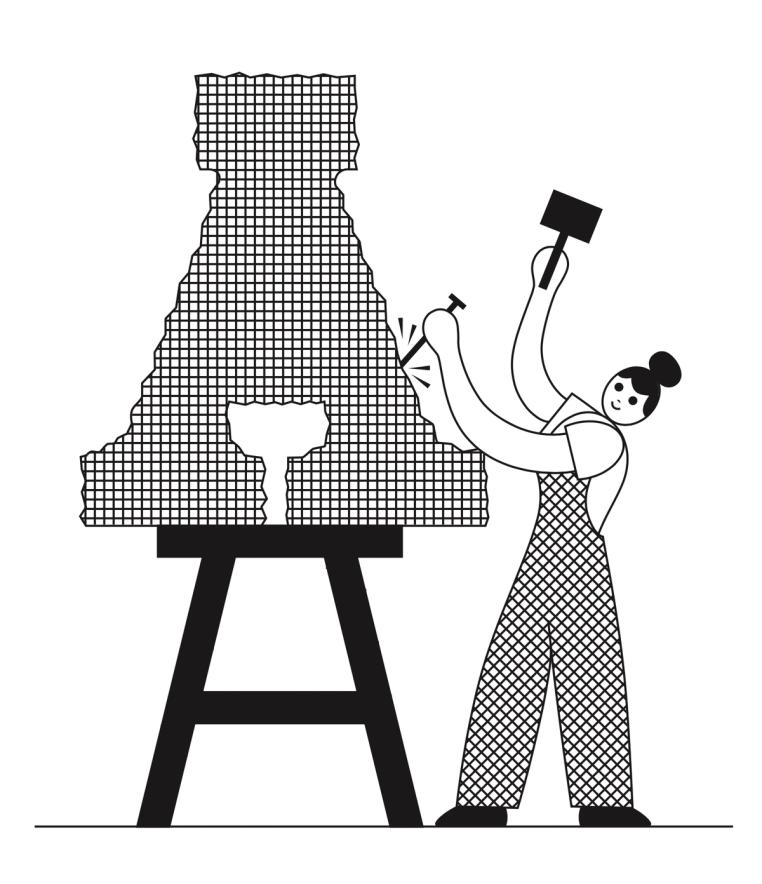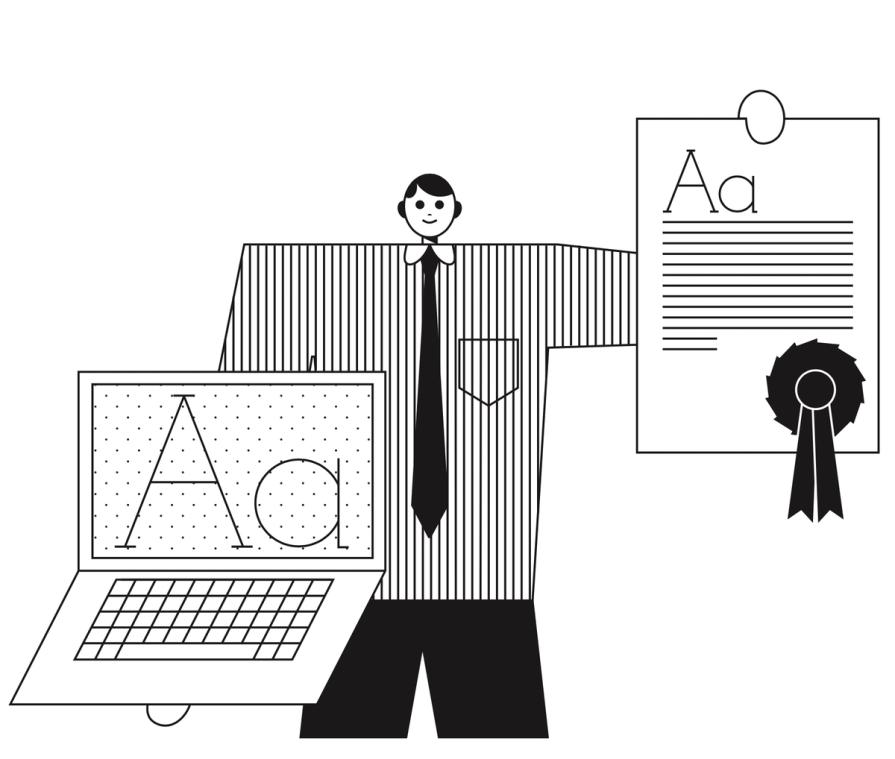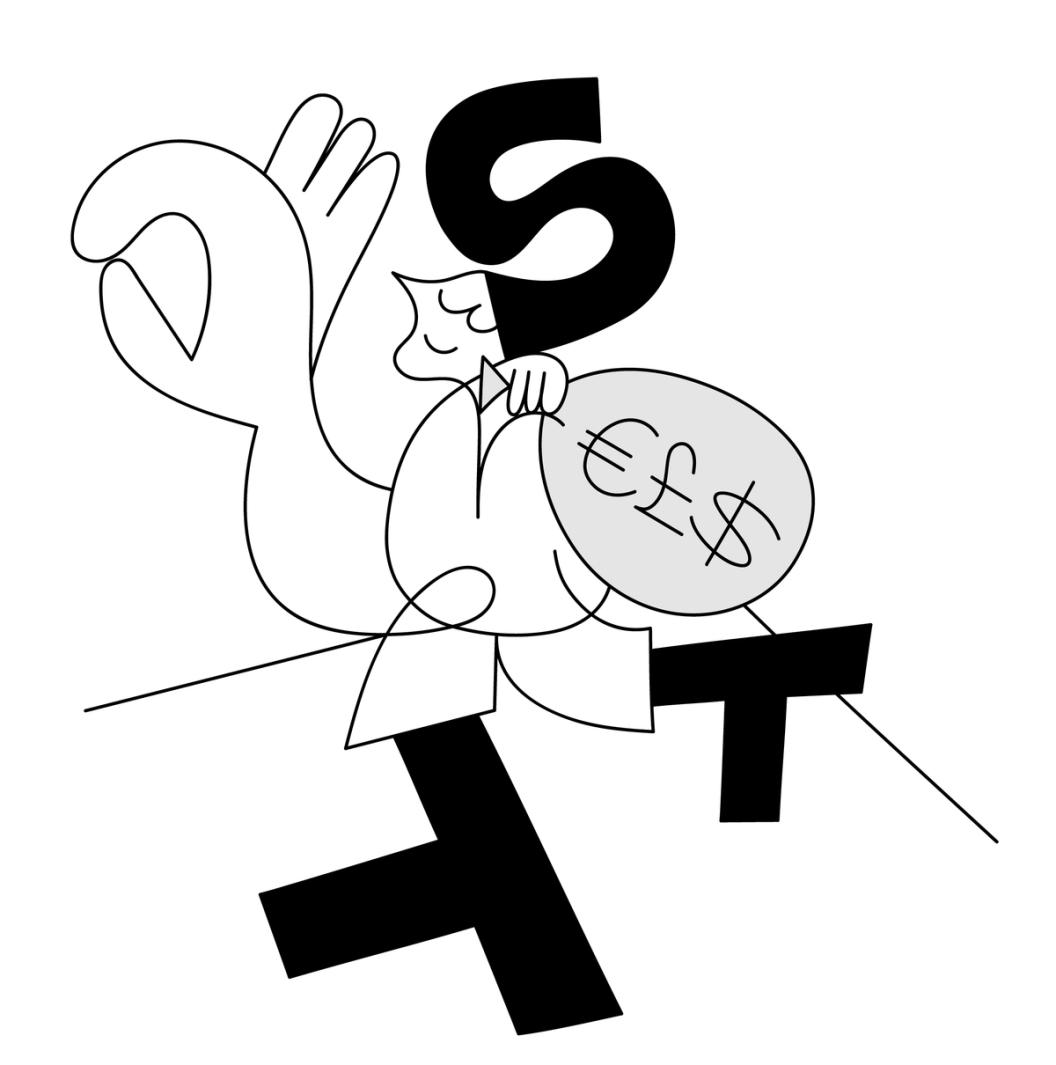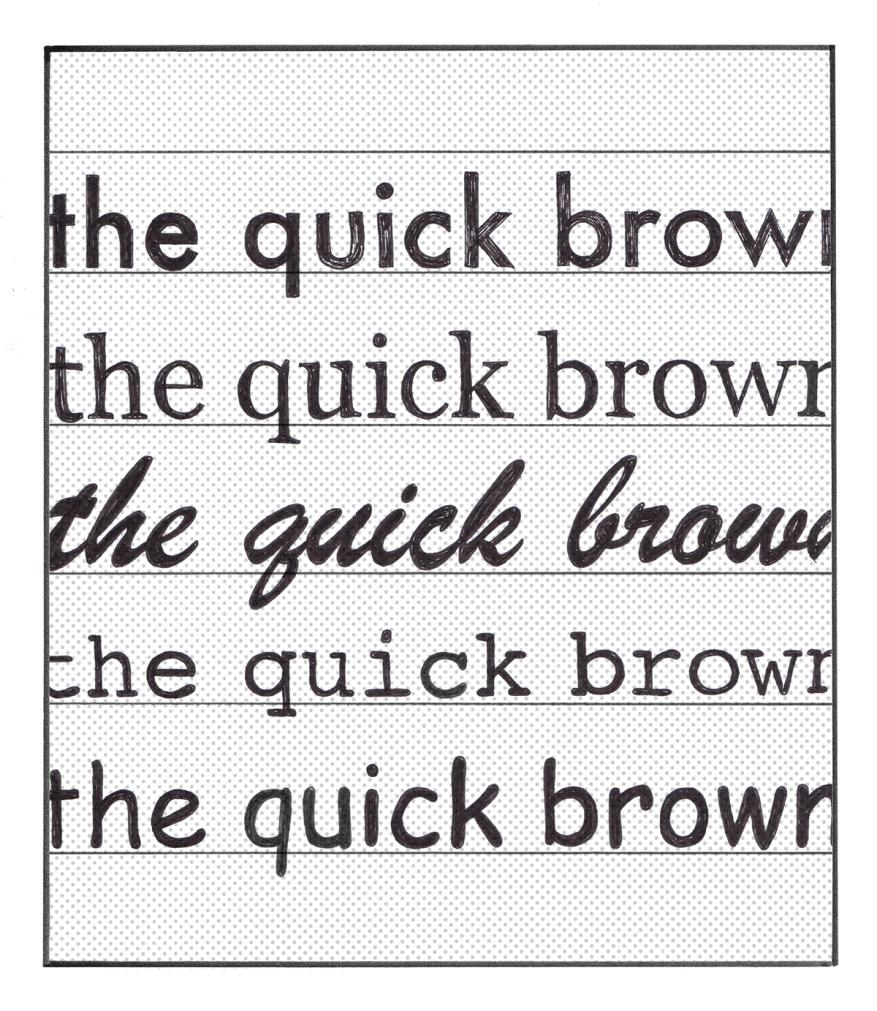Custom

Illustration: James Graham .
(Read More)Companies, brands, institutions and so on can find great benefits in using and/or owning a custom-made typeface with a design that fits their voice. Unlike retail typefaces, they can be used as an important and exclusive element of the visual identity and be fully suited to their needs.
A custom typeface costs more at first than a license of an existing retail one (the client can have a design for their exclusive use instead of a retail design that may be used by many others). Still, it can be financially and strategically more interesting, and profitable than licensing retail typefaces in the long run. The pros and cons between these choices are worth the effort of comparison and evaluation.
EULA

Illustration: James Graham .
(Read More)Digital typefaces are products distributed and sold like software: it is not the design itself that is sold, but a copy (a font) attached with an agreement to use it: its license.
When purchasing a license, a specific EULA (End User License Agreement) is attached, containing all the terms and conditions of use granted by the distributor, foundry or designer for each font.
Different EULAs and licensing terms can exist according to the politics and principles of each entity. It is always advised to contact the foundry or the distributor if there is any doubt or question related to the terms in the EULA, to be sure that the license and EULA are valid for the intended use.License

Illustration: Catherine Potvin .
(Read More)Typefaces in their digital form are products distributed and sold like software: it is not the design itself that is sold, but a copy (a font) attached with an agreement to use it: its license.
A license contains terms and conditions granted by the designer and/or the publisher to use the font. There are multiple types of licenses adjusted to the intended use of the potential client. There can be different licenses, with a pricing system specific to particular distributors, according to their marketing philosophy.
Royalties

Illustration: Catherine Potvin .
(Read More)Typefaces are designs sold as fonts (copies of the original design) under their corresponding licenses. When such licenses are distributed and managed by an intermediary (publisher, distributor, or type foundry), a percentage of the sales goes to the designer. That part is the royalties, similar to what is applied in other artistic industries (music, illustration, etc.).
Trial

Illustration: Chloe Kendall .
(Read More)Most type foundries and other font distributors offer today the possibility to get a trial of a typeface, which allows the user to try it for free before deciding to buy its license or not. Their conditions of usage are limited to trying the typeface only, listed in a specific trial EULA. In general, foundries share their trials with a limited amount of glyphs and/or features, enough to give an idea of how the typeface looks in a given situation.
Type Foundry

Illustration: Pauline Fourest (Spaghetype ).
(Read More)A type foundry is a design studio that produces and/or publishes retail typefaces, designs custom typefaces or does various activities related to type design (logotype designs, consultancy, etc.).
We inherited the term “foundry” from companies that produced fonts of metal type for printers. Back then, a font was a set of movable metal pieces of type in one size. Those metal pieces (one per glyph) were produced by melting an alloy of lead and other metals, which would be poured into a mold to produce multiple copies of one letterform or other character. Fondre is the French verb for “to melt.”